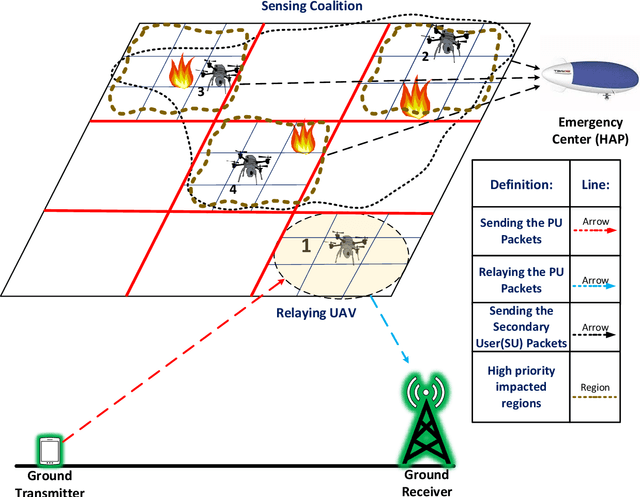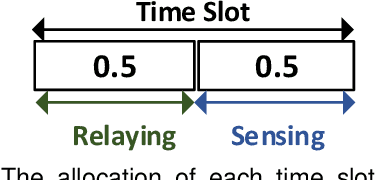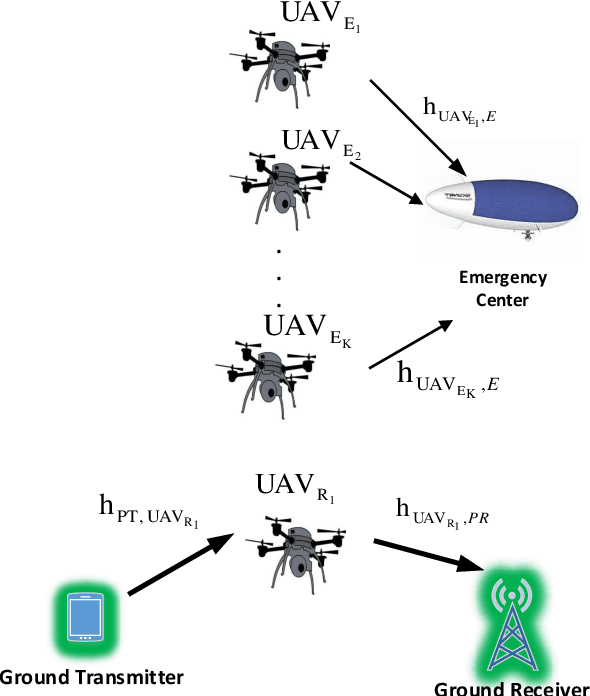An Autonomous Spectrum Management Scheme for Unmanned Aerial Vehicle Networks in Disaster Relief Operations
Paper and Code
Nov 26, 2019



This paper studies the problem of spectrum shortage in an unmanned aerial vehicle (UAV) network during critical missions such as wildfire monitoring, search and rescue, and disaster monitoring. Such applications involve a high demand for high-throughput data transmissions such as real-time video-, image-, and voice- streaming where the assigned spectrum to the UAV network may not be adequate to provide the desired Quality of Service (QoS). In these scenarios, the aerial network can borrow an additional spectrum from the available terrestrial networks in the trade of a relaying service for them. We propose a spectrum sharing model in which the UAVs are grouped into two classes of relaying UAVs that service the spectrum owner and the sensing UAVs that perform the disaster relief mission using the obtained spectrum. The operation of the UAV network is managed by a hierarchical mechanism in which a central controller assigns the tasks of the UAVs based on their resources and determine their operation region based on the level of priority of impacted areas and then the UAVs autonomously fine-tune their position using a model-free reinforcement learning algorithm to maximize the individual throughput and prolong their lifetime. We analyze the performance and the convergence for the proposed method analytically and with extensive simulations in different scenarios.
 Add to Chrome
Add to Chrome Add to Firefox
Add to Firefox Add to Edge
Add to Edge